
Cinematography
Prior to STREET MUSIC, Doob made this 27-minute documentary, which follows his Yale classmate David Sewall, a violinist and singer, as he performs traditional and original songs on the streets and in the pubs, parks, and markets of London. In color and in black and white, Sewall's unique style and good humor transfix audiences of curious school children, West End theater-goers, and passersby on the sidewalk. His energetic performance of then-current hit "Young Girl" for a group of Covent Garden flower sellers is a particular highlight, and the film closes with a moving rendition of “Danny Boy” that prompts pub-goers to join Sewall in song. Preserved at Fotokem, 2021.

Director
Prior to STREET MUSIC, Doob made this 27-minute documentary, which follows his Yale classmate David Sewall, a violinist and singer, as he performs traditional and original songs on the streets and in the pubs, parks, and markets of London. In color and in black and white, Sewall's unique style and good humor transfix audiences of curious school children, West End theater-goers, and passersby on the sidewalk. His energetic performance of then-current hit "Young Girl" for a group of Covent Garden flower sellers is a particular highlight, and the film closes with a moving rendition of “Danny Boy” that prompts pub-goers to join Sewall in song. Preserved at Fotokem, 2021.

Director
From directors Nick Doob and Shari Cookson, "Requiem for the Dead" is made entirely from found footage, including social media posts, 9-1-1 calls, news stories and police files. The film tells the stories of those who have been killed by gunfire, whether from accidental violence, random shootings, family disputes or suicide. Hear those stories of those who have died, which is only a fraction of the 32,000 people killed in America each year, 88 per day, from gun violence.

Director of Photography
This is the story of a year in the life of one mother whose daily struggles illuminate the challenges faced by more than 42 million American women and the 28 million children who depend on them.

Producer
This is the story of a year in the life of one mother whose daily struggles illuminate the challenges faced by more than 42 million American women and the 28 million children who depend on them.

Director
This is the story of a year in the life of one mother whose daily struggles illuminate the challenges faced by more than 42 million American women and the 28 million children who depend on them.

Director
While there is hope for the future as science gains momentum, millions of Americans are currently affected by the painful and deadly consequences of Alzheimer's. This documentary profiles seven people living with the disease, each in an advancing state of dementia, from its earliest detectable changes through death.

Director of Photography
Pinki is a five-year-old girl from a village in the Mirzapur District, India, born into a desperately poor family, and with a cleft lip. Pinki never realized that this condition required just one simple operation until she met Pankaj, a social worker traveling from village to village gathering patients to go to hospital in Varanasi that provides free surgery to thousands each year. This real-world fairy tale follows its protagonist journey to a dream smile from isolation and shame.

Camera Operator
Senegalese pop sensation Youssou Ndour has spent the last 20 years in the spotlight as a world-renowned musician and the iconic representative "voice of Africa." At the height of his career, Youssou became frustrated by the negative perception of his Muslim faith and composed Egypt, a deeply spiritual album dedicated to a more tolerant view of Islam. The album's brave musical message was wholeheartedly embraced by Western audiences but ignited serious religious controversy in his homeland of Senegal. The film chronicles the difficult journey Youssou must undertake to assume his true calling.
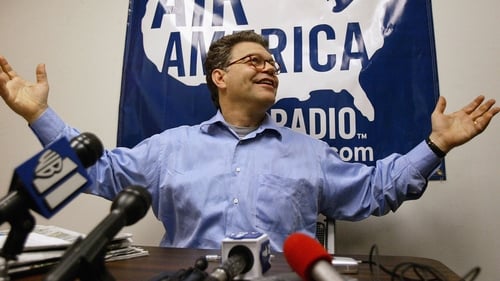
Director
Join filmmaking duo Chris Hegedus and Nick Doob as their cameras follow Franken to book signings, campaign rallies and the launch of Air America Radio, documenting his transformation from irreverent funnyman to political pundit.

Director
This intimate documentary follows careers of two remarkable personalities: Carmen de Lavallade, a dynamic dancer and choreographer from California who moved to New York with Alvin Ailey and began a legacy of modern dance in America, and her husband Geoffrey Holder, a Trinidad-born choreographer, set and costume designer, painter and man about town with productions such as The Wiz. Features interviews and performance footage of friends and colleagues: dancers Judith Jamison, Gus Solomons, Jr., Dudley Williams, Ulysses Dove and Alvin Ailey.

Director
Follows a Mississippi family's attempts to deal with an increasingly violent and erratic child.

Camera Operator
A film featuring the veteran soul music artists and music of Stax Records.

Editor
On May 24, 2000, the historic Ryman Auditorium was booked to offer Nashvillians an evening of sublime beauty. Label executives and soundtrack producers so loved the music of O Brother, Where Art Thou? that they brought it to life as a benefit concert for the Country Music Hall of Fame. Filmmakers Joel and Ethan Coen loved it so much that they hired famed documentary filmmaker D.A. Pennebaker to record the show for posterity. The concert that unfolded that night was one of the greatest musical moments in the annals of Music City. Performers: John Hartford, Alison Krauss, Emmylou Harris, Gillian Welch, Chris Thomas King, The Cox Family, Fairfield Four, Union Station, Colin Linden, The Nashville Bluegrass Band, The Peasall Sisters, Ralph Stanley, David Rawlings, The Whites.

Cinematography
On May 24, 2000, the historic Ryman Auditorium was booked to offer Nashvillians an evening of sublime beauty. Label executives and soundtrack producers so loved the music of O Brother, Where Art Thou? that they brought it to life as a benefit concert for the Country Music Hall of Fame. Filmmakers Joel and Ethan Coen loved it so much that they hired famed documentary filmmaker D.A. Pennebaker to record the show for posterity. The concert that unfolded that night was one of the greatest musical moments in the annals of Music City. Performers: John Hartford, Alison Krauss, Emmylou Harris, Gillian Welch, Chris Thomas King, The Cox Family, Fairfield Four, Union Station, Colin Linden, The Nashville Bluegrass Band, The Peasall Sisters, Ralph Stanley, David Rawlings, The Whites.

Director
On May 24, 2000, the historic Ryman Auditorium was booked to offer Nashvillians an evening of sublime beauty. Label executives and soundtrack producers so loved the music of O Brother, Where Art Thou? that they brought it to life as a benefit concert for the Country Music Hall of Fame. Filmmakers Joel and Ethan Coen loved it so much that they hired famed documentary filmmaker D.A. Pennebaker to record the show for posterity. The concert that unfolded that night was one of the greatest musical moments in the annals of Music City. Performers: John Hartford, Alison Krauss, Emmylou Harris, Gillian Welch, Chris Thomas King, The Cox Family, Fairfield Four, Union Station, Colin Linden, The Nashville Bluegrass Band, The Peasall Sisters, Ralph Stanley, David Rawlings, The Whites.

Cinematography
The filmmakers follow Oliver North's unsuccessful 1994 bid for a Virginia Senate seat, focusing on North's campaign strategist, Mark Goodin, and a Washington Post reporter. Mudslinging ensues.
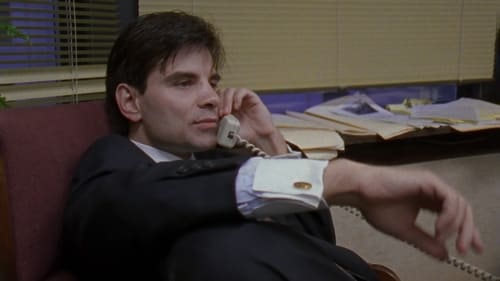
Cinematography
A behind-the-scenes documentary about the Clinton for President campaign, focusing on the adventures of spin doctors James Carville and George Stephanopoulos.

Editor
Ведущий преподаватель актерского мастерства, воспитавший некоторых из самых известных исполнителей сцены и экрана, Сэнфорд Мейснер был одним из основателей Group Theatre. Групповой театр, кооперативный театральный ансамбль, стал ведущей силой в театральном мире 30-х годов. Мейснер выступал во многих самых запоминающихся постановках группы.

Director of Photography
Ведущий преподаватель актерского мастерства, воспитавший некоторых из самых известных исполнителей сцены и экрана, Сэнфорд Мейснер был одним из основателей Group Theatre. Групповой театр, кооперативный театральный ансамбль, стал ведущей силой в театральном мире 30-х годов. Мейснер выступал во многих самых запоминающихся постановках группы.

Director
Ведущий преподаватель актерского мастерства, воспитавший некоторых из самых известных исполнителей сцены и экрана, Сэнфорд Мейснер был одним из основателей Group Theatre. Групповой театр, кооперативный театральный ансамбль, стал ведущей силой в театральном мире 30-х годов. Мейснер выступал во многих самых запоминающихся постановках группы.

Camera Operator
В 1987 году состоялся релиз шестого студийного альбома Depeche Mode — Music for the Masses, в поддержку которого группа отправилась в масштабное мировое турне, включающее в себя ровно 101 концерт. Последнее, 101-е выступление состоялось 18 июня 1988 года на стадионе Роуз Боул, Пасадена (Калифорния), в присутствии 80 тыс. человек.
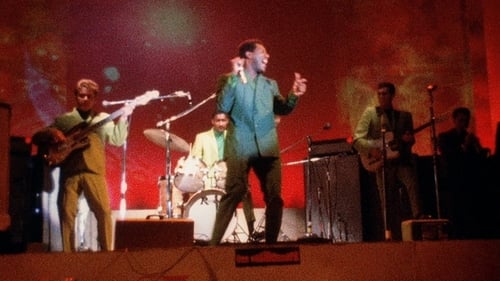
Camera Operator
Renowned documentary filmmaker D.A. Pennebaker captures Otis Redding in his ascendancy, singing at the historic Monterey International Pop Festival in June 1967. Comedian Tom Smothers introduces Redding to a crowd that is leaving -- until Redding grabs them with his charged rendition of "Shake." Redding's performance also includes "Respect" (which he wrote), "I've Been Loving You Too Long," "Satisfaction," and "Try a Little Tenderness." Tragically, Redding died in a plane crash six months later. An innovative filmmaker who started in the 1950s making experimental films, Pennebaker garnered an Oscar nomination for Best Documentary Feature in 1993 for The War Room, his behind-the-scenes look at Bill Clinton's 1992 campaign. His other subjects have included Norman Mailer, Bob Dylan, and David Bowie.
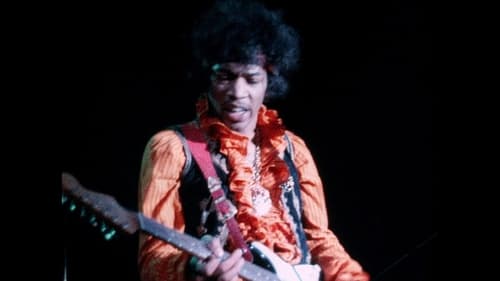
Camera Operator
It's no exaggeration to say this might be the most intense and groundbreaking 45-minute performance in the history of rock. Jimi Hendrix's debut American set at 1967's Monterey Pop Festival is generally considered one of the most radical and legendary live shows ever. Virtually unknown to American audiences at the time, even though he was already an established entity in the UK, Hendrix and his two-piece Experience explode on stage, ripping through blues classics "Rock Me Baby" and Howlin' Wolf's "Killing Floor," interpreting and electrifying Bob Dylan's "Like a Rolling Stone," debuting songs from his yet-to-be-released first album and closing with the now historic sacrificing/burning of his guitar during an unhinged version of "Wild Thing" that even its writer Chip Taylor would never have imagined. Hendrix uses feedback and distortion to enhance the songs in whisper-to-scream intensity, blazing territory that had not been previously explored with as much soul-frazzled power.
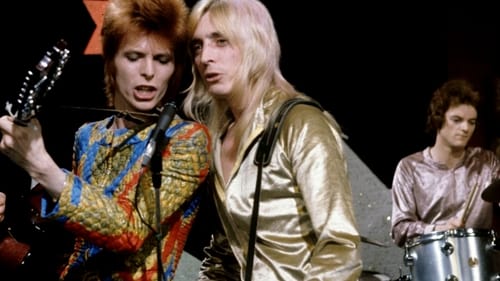
Camera Operator
Hammersmith Odeon, London, July 3, 1973. British singer David Bowie performs his alter ego Ziggy Stardust for the very last time. A decadent show, a hallucinogenic collage of kitsch, pop irony and flamboyant excess: a musical symbiosis of feminine passion and masculine dominance that defines Bowie's art and the glam rock genre.

Director
A collection of performances by street musicians across the country, from New York to San Francisco, New Orleans to Chicago, the film presents 19 musicians in seven cities, and was one of Doob's first feature-length films. Among the singers, guitarists, drummers, dancers, and other artists, Doob includes street performance legends such as Brother Blue, Gene Palma, Bongo Joe, the Automatic Human Jukebox, and bluesman Jimmy Davis. The film captures a cross-section of Americans filled with raw talent, showmanship, and hustle, and presents a time capsule of the fashion, architecture, and culture of the 1970s. (Yale Film Archive)

Director of Photography
In the spring of 1970, thousands of protesters descended on New Haven to demonstrate against the trial of Black Panther members for the murder of suspected FBI informant Alex Rackley. Led by radical luminaries Abbie Hoffman, Jerry Rubin, and Tom Hayden, the demonstrators converged on the New Haven Green to vent their anger and shut Yale down. Yale President Kingman Brewster commissioned a small group of Yale students to document the demonstrations, resulting in this 22-minute black-and-white film.

Director of Photography
Doob’s first longer film begins with a shot of the sun setting over the Hudson River in New York City, and goes on to examine the nighttime street life found in the block of 42nd Street between Seventh and Eighth Avenues. As Doob describes it, “That block was fairly notorious at that time, with pornographic bookstores and theaters, peep-shows, and prostitution. It was also a kind of magnet for exotic personalities, and a visually interesting location.” The film showed at many film festivals, won a prize at the West German Short Film Festival in Oberhausen, and was well reviewed in the New York Times. After making this film, and after the experience of taking Murray Lerner’s filmmaking class at Yale, Doob worked as Lerner’s cinematographer on a number of films, including his 1979 Academy Award-winning documentary FROM MAO TO MOZART. (Yale Film Archive)

Director
As a senior at Yale College in 1968, Doob was invited to participate in the Scholars of the House Program, a senior honors program that required students to create, in lieu of regular classes, “a finished essay or project which must justify by its scope and quality the freedom which has been granted.” Rather than pursue a more traditional written work, Doob initially chose to make a film, an unorthodox approach that had not been previously attempted. In the end, Doob chose to make two films to fulfill the requirement, beginning with COSTUMED DANCER. The film is a progression of images of a dancer, shot and printed on high contrast stock, and stacked in the printer in a number of layers so as to create multiple images of the dancer, moving from single image to multiple image in a kind of phasing. It is cut to music composed by Doob’s friend David Sewall, who was the subject of one of Doob’s later films, LONDON SONGS (1972). (Yale Film Archive)

Director
Doob’s first longer film begins with a shot of the sun setting over the Hudson River in New York City, and goes on to examine the nighttime street life found in the block of 42nd Street between Seventh and Eighth Avenues. As Doob describes it, “That block was fairly notorious at that time, with pornographic bookstores and theaters, peep-shows, and prostitution. It was also a kind of magnet for exotic personalities, and a visually interesting location.” The film showed at many film festivals, won a prize at the West German Short Film Festival in Oberhausen, and was well reviewed in the New York Times. After making this film, and after the experience of taking Murray Lerner’s filmmaking class at Yale, Doob worked as Lerner’s cinematographer on a number of films, including his 1979 Academy Award-winning documentary FROM MAO TO MOZART. (Yale Film Archive)
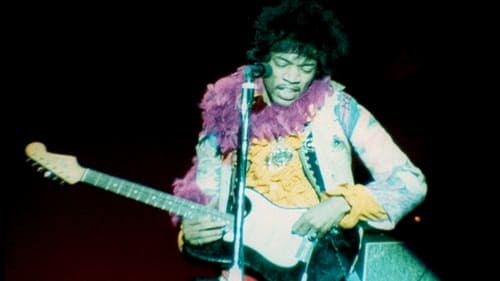
Camera Operator
Featuring performances by popular artists of the 1960s, this concert film highlights the music of the 1967 California festival. Although not all musicians who performed at the Monterey Pop Festival are on film, some of the notable acts include the Mamas and the Papas, Simon & Garfunkel, Jefferson Airplane, the Who, Otis Redding, and the Jimi Hendrix Experience. Hendrix's post-performance antics -- lighting a guitar on fire, breaking it and tossing a part into the audience -- are captured.

Director
"While still a student at Yale University, Nick Doob made a series of short works that launched his career in film. One was Plastic Saints, in which Doob took black-and-white footage of a demonstration in Washington DC that he and four fellow students attended, and intercut it with color paint-on-film loops, all set to a recording of “When the Saints Go Marching In.”" - Moving Image Archiving News






























